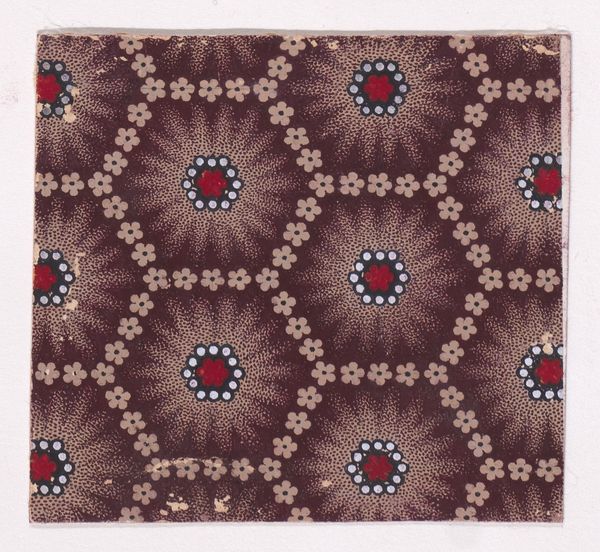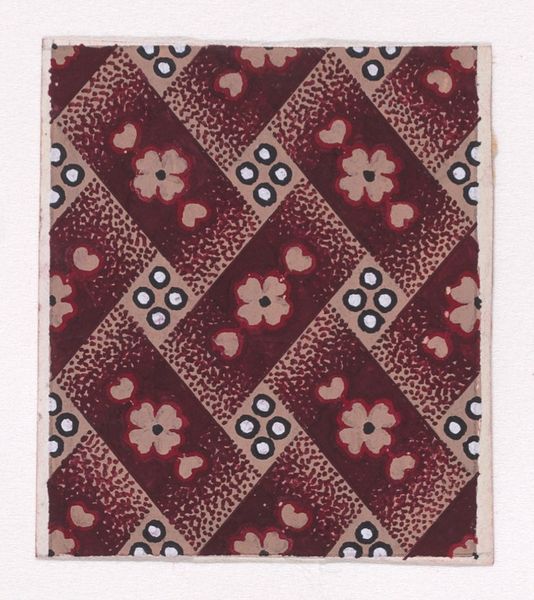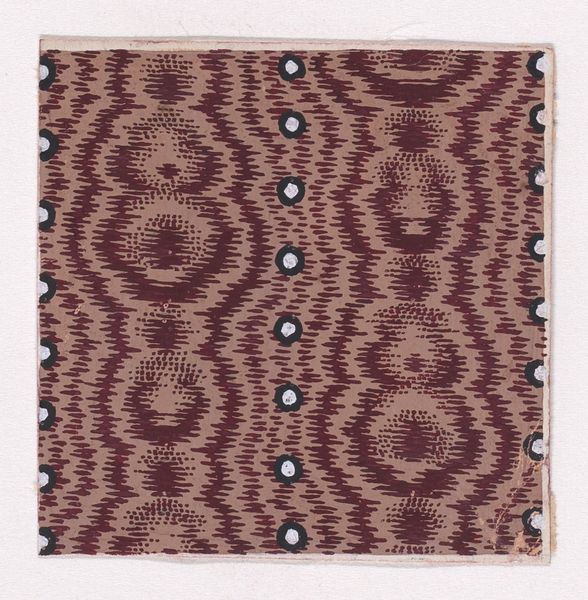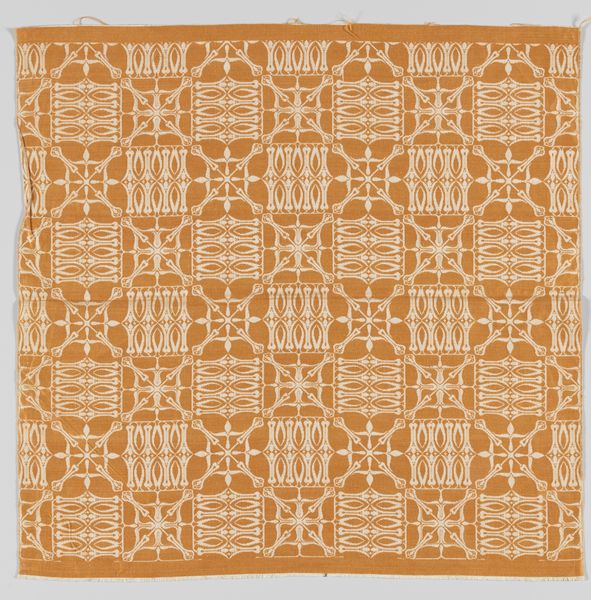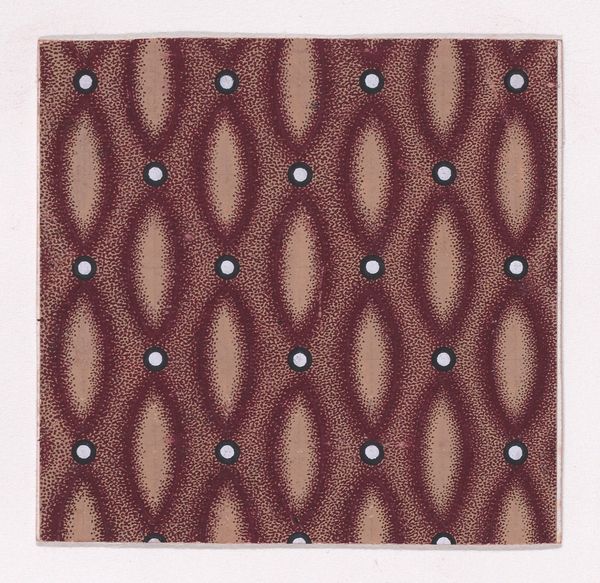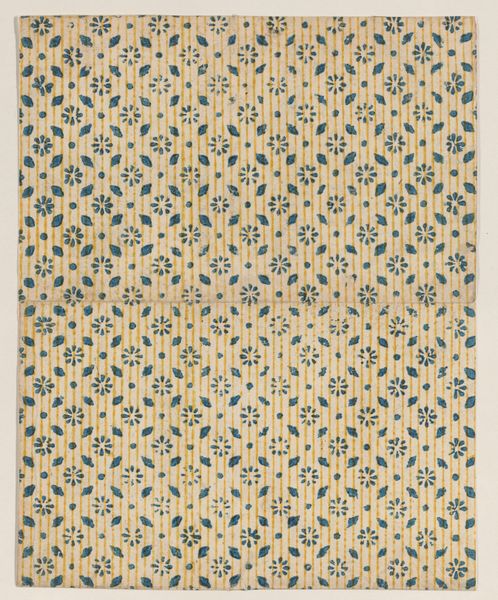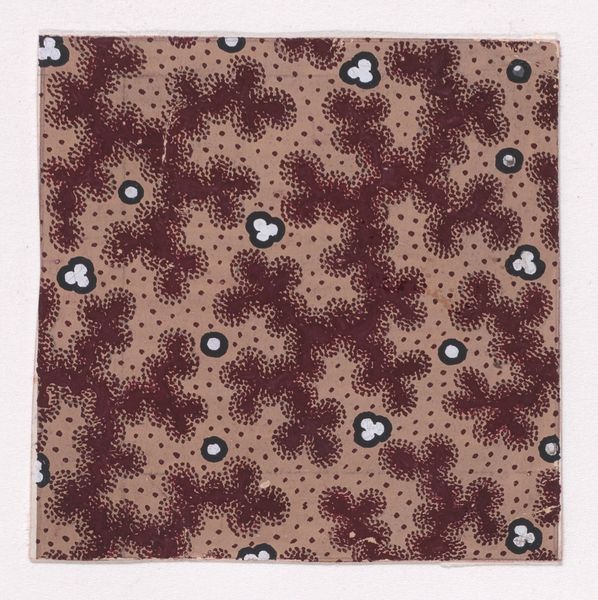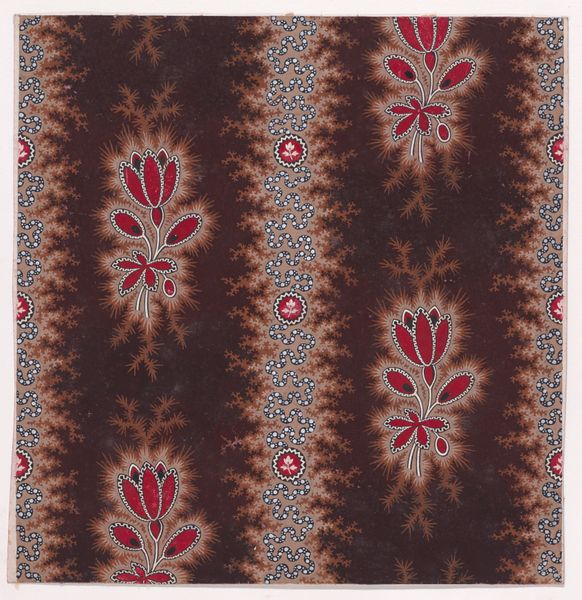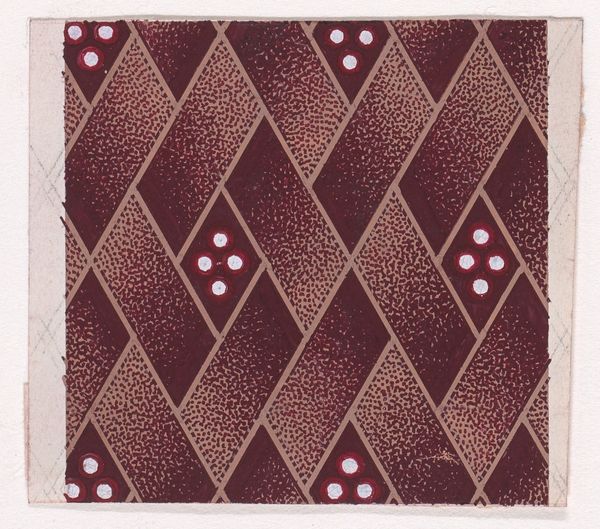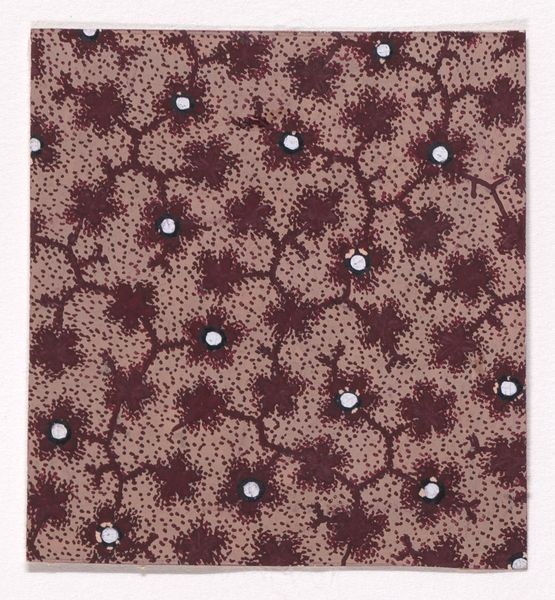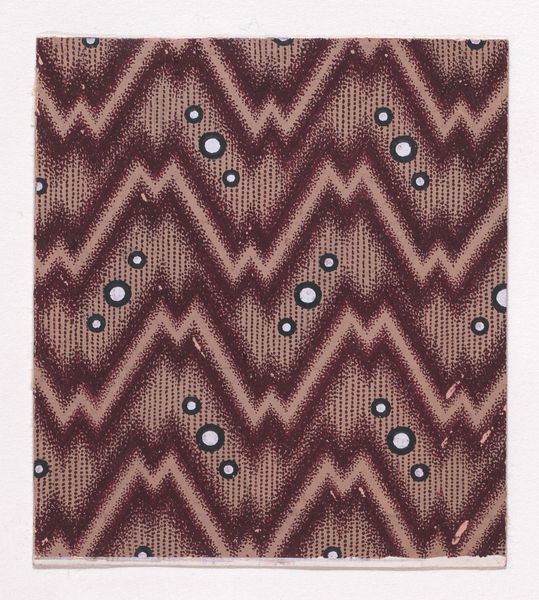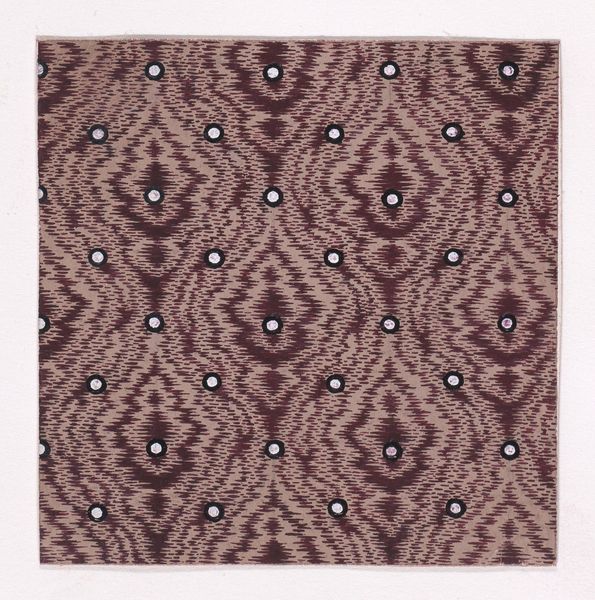
Textile Design with a Checked Pattern of Intersecting Honeycomb Lines and Vertical Stripes of Pearls 1840
0:00
0:00
# print
#
geometric pattern
#
geometric
Dimensions: Sheet: 2 5/8 × 2 9/16 in. (6.7 × 6.5 cm)
Copyright: Public Domain
Editor: So, here we have an anonymous textile design from 1840, "Textile Design with a Checked Pattern of Intersecting Honeycomb Lines and Vertical Stripes of Pearls". It's a drawing, possibly a print, at the Met. What jumps out to me is how ordered it is, but also kind of muted in color. What do you see in this piece? Curator: Well, immediately I’m drawn to the materiality and process. Think about the labour involved in creating this repeated pattern by hand, even with printing techniques. It blurs the lines, doesn’t it, between 'art' and craft, and that’s fascinating. Who was this made for? Was it mass-produced? What dyes were available then? Editor: That’s a great point! I hadn’t considered the actual physical making of it. It feels so… flat on the screen, I guess. What do you mean by "Who was this made for?"? Curator: Well, this could have been a sample design intended for widespread textile production, to be consumed by a large segment of society. Or, it may have been a very exclusive and custom made pattern. The quality of the materials and the intricacy of the design inform the purpose. Were natural or synthetic materials used? Editor: That is true. So by focusing on its materials and intended consumption we can almost tell its social history. I see it’s in the style of "pattern-and-decoration." It sounds like this piece might represent an intentional statement, placing ‘decoration’ as high art? Curator: Precisely. The work challenges the hierarchy of art. This pushes us to question why we value certain artistic practices over others and reevaluate the labor, materiality and social context in producing art. The piece prompts critical thoughts and discussions beyond surface appearance. Editor: Wow. I guess I will never look at textile designs the same way. Focusing on the production broadens what art can be. Thanks! Curator: My pleasure. Considering its historical, material reality deepens appreciation.
Comments
No comments
Be the first to comment and join the conversation on the ultimate creative platform.

